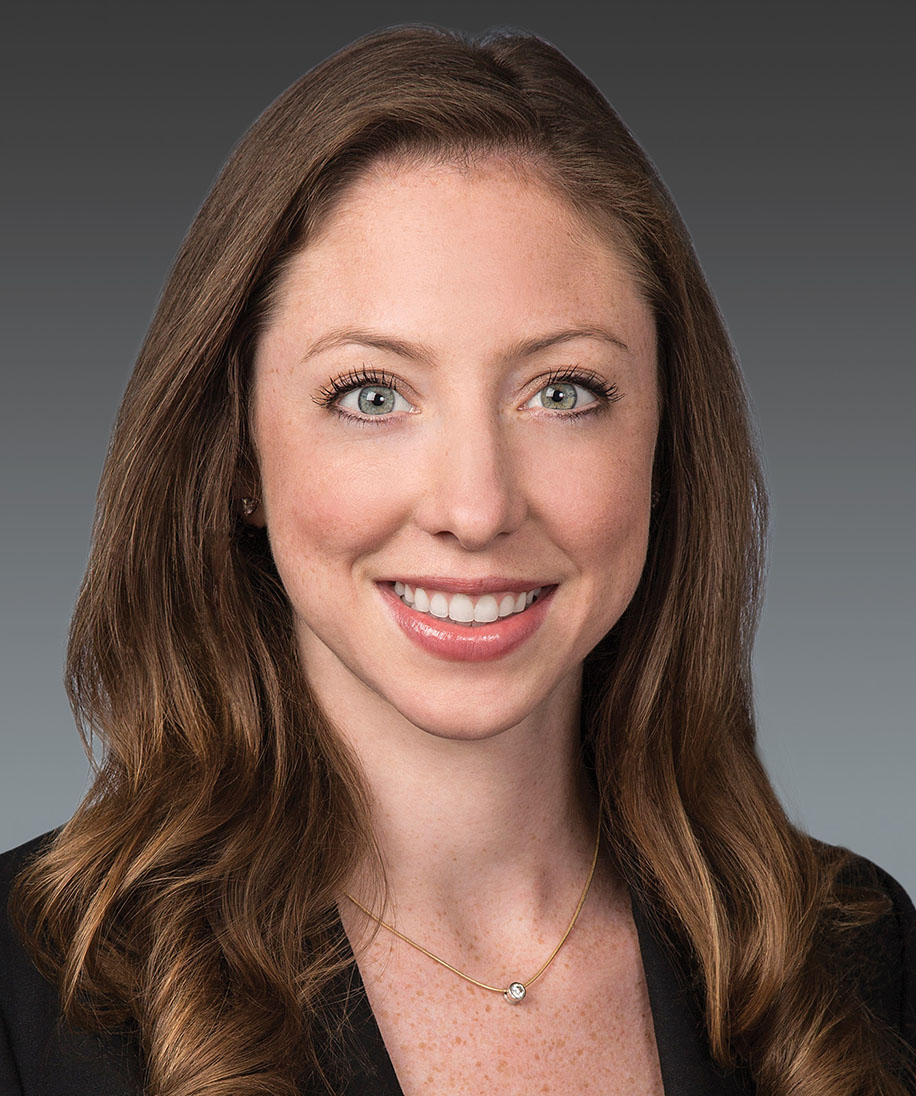Client Alert
Back to the Future—Trump Administration Seeks to Roll Back Financial Services Regulation
November 30, 2016
By Thomas P. Brown, V. Gerard Comizio, Lawrence D. Kaplan, Gerald S. Sachs & Kristin Teager
On January 20, 2017, Donald J. Trump will be sworn in as the 45th President of the United States. Upon becoming President, both the United States Senate and House of Representatives will be controlled by members of Mr. Trump’s own party. As a result, legislation that President Obama would have vetoed and ideas that would likely never have been seriously considered by Congress may now become law.
The Trump Transition has sent a clear signal that it intends to take a very different path on regulation of the financial services industry than the current Administration. The Transition’s website, www.greatagain.gov, contains a section devoted to Financial Services, and it previews a plan to rewrite Dodd-Frank, one of the central legislative accomplishments of President Obama:
Following the financial crisis, Congress enacted the Dodd-Frank Act, a sprawling and complex piece of legislation that has unleashed hundreds of new rules and several new bureaucratic agencies. The proponents of Dodd-Frank promised that it would lift our economy. Yet now, six years later, the American people remain stuck in the slowest, weakest, most tepid recovery since the Great Depression. Paychecks have been stagnant. Savings are being depleted, millions are unemployed or underemployed, and millions more have dropped out of the workforce altogether. Economic growth remains below 2%, about half the historic average. The big banks got bigger while community financial institutions have disappeared at a rate of one per day, and taxpayers remain on the hook for bailing out financial firms deemed “too big to fail.”
The Dodd-Frank economy does not work for working people. Bureaucratic red tape and Washington mandates are not the answer. The Financial Services Policy Implementation team will be working to dismantle the Dodd-Frank Act and replace it with new policies to encourage economic growth and job creation.[1]
During the campaign, candidate Trump did not reveal much detail about his policy agenda for the financial services industry, but the focus on Dodd-Frank previewed by the Transition Team suggests that President-elect Trump intends to start with many of the Dodd-Frank reform bills that have been circulating in Congress over the last two years. In the 114th Congress, the House Financial Services Committee approved the Financial CHOICE Act (“Choice Act”),[2] and Senate Banking Committee held hearings on the Financial Regulatory Improvement Act of 2015 (“Improvement Act”).[3] Indeed, shortly after the election, the Chairman of the House Financial Services Committee, Jeb Hensarling, who had a close working relationship with Vice President-elect Pence when the Vice President-elect served in the House of Representatives, gave a speech in which he outlined plans for a Choice Act 2.0. In that speech, Rep. Hensarling explained that he intended to restrain “the fourth branch of government”—agencies that have regulation writing authority—by requiring more involvement by elected officials in material rulemakings, which will need to be ratified by the Congress.[4]
Whether the President-elect or his team have plans beyond reshaping Dodd-Frank is less clear. Given the established working relationship between the Vice President-elect and the Chairman of the House Financial Services Committee, it is possible that the Trump Administration will pick up some of the other reform bills currently languishing in Congress such as GSE reform based on the Protecting American Taxpayers and Homeowners Actor PATH Act[5] or Federal Reserve Reform based on the Fed Oversight and Modernization Act of 2015 or FORM Act.[6]
Consumer Financial Protection Bureau
By virtually any measure—size, scope, and authority—the Consumer Financial Protection Bureau (“CFPB”) is the most significant new agency created by Dodd-Frank. And almost from the day that President Obama signed Dodd-Frank into law, Republicans in the House and Senate have made clear that they would like to see changes in the structure and operation of the Bureau.
As compared with other agencies, the Bureau has a unique set of attributes. The Bureau, like many of the other financial services regulators, is independent of the President. Unlike most of the other financial regulatory agencies and the FTC, however, the Bureau is run by a single person, labeled the Director, and the Bureau, unlike the FTC, is not subject to direct appropriation from Congress, instead drawing a fixed portion of the operating budget of the Federal Reserve to fund its operations. In addition, the Bureau has broad authority to promulgate rules. Unlike the other financial services regulators, the Bureau’s rule making authority extends to firms and individuals whose business activity it does not charter or license. The Bureau’s rule making authority also goes beyond specifically enumerated statutes. The Bureau has the power to issue rules to combat “unfair” and “abusive” acts and practices. Moreover, and also distinct from the other financial services regulators, the Bureau has rule making, supervisory, and enforcement authority over virtually any business connected to the consumer financial services industry.
Republicans in both the House and Senate have introduced legislation that would fundamentally alter the Bureau’s structure. Republican sponsored legislation would replace the lone Director with a five‑member commission.[7] The restructuring bill in the House would subject the Bureau like most other enforcement agencies to Congressional appropriation and eliminate the Bureau’s authority to enact rules to combat “abusive” practices. The restructuring bill in the Senate, meanwhile, would raise the asset threshold that triggers automatic supervision by the Bureau.
Critics of these reform proposals claim that these changes would “defang” the Bureau. They claim that a Bureau subject to Congressional appropriation would be reluctant to bring enforcement actions against large banks. They claim that a Bureau managed by a Commission rather than a single Director would also be less likely to promulgate rules to take on entrenched practices like compulsory arbitration provisions or to eliminate popular, if controversial, financial services products such as payday loans and high interest installment loans.
Apart from restructuring, the Bureau is also likely to be a target of congressionally driven regulatory roll back. As part of the package of legal reforms introduced as part of the so-called Contract with America, Congress gave itself the authority to review and reject regulations promulgated by agencies such as the Bureau. The Congressional Review Act, 5 U.S.C. §801-808, gives Congress 60 “session” days (i.e., days in which Congress is in session) to review agency actions. Resolutions under the CRA are not subject to the Senate cloture requirement, meaning that a bare majority in the Senate is sufficient to pass such a resolution. If Congress disapproves of a rule and the President signs the resolution of disapproval, the rule is eliminated. The Bureau’s recently issued prepaid rule is likely going to be subject to Congressional disapproval under the Congressional Review Act as would any final rules published by the Bureau between now and the start of the next Congress, including pending proposals to preclude compulsory arbitration clauses and remake the small dollar and payday lending industries.[8]
Although most efforts to remake the CFPB will require Congressional action, there is at least some possibility of unilateral executive action. A panel of the D.C. Circuit recently held that the Bureau’s agency structure is unconstitutional. Although the panel decision did not strike down the Bureau root and branch, it did subject the Director to removal by the President at will. It is thus possible that a President-elect Trump, immediately after his inauguration, would remove the current director of the Bureau, Richard Cordray. Such an action would be largely symbolic, however, as the Director’s powers would devolve to the Deputy Director of the CFPB until a successor to the existing Director could get through the Senate confirmation process.
Volcker Rule
The Volcker Rule, another centerpiece of the Dodd-Frank Act, was intended to restrict banking entities’ ability to (i) engage in proprietary trading, which places insured deposits at risk through investments that do not always benefit bank customers; and (ii) own or invest in hedge funds or private equity funds. A forthcoming July 2017 compliance deadline for banking entities to conform investments in certain illiquid funds will be an impetus to prompt adoption of legislation to eliminate or modify the Volcker Rule. While the Improvement Act would exempt banks with less than $10 billion in assets from the Volcker Rule,[9] eliminating a significant compliance burden to community banks, the Choice Act would eliminate the rule altogether for all banking entities, under the premise that it impedes capital formation.[10]
Changes to Systematically Important Financial Institutions
The Dodd-Frank Act imposes increased regulatory burdens on larger financial institutions, deeming any bank with over $50 billion in assets and certain non-banks designated by the Financial Stability Oversight Council (“FSOC”) as Systematically Important Financial Institutions (“SIFIs”) subject to Federal Reserve Board Supervision.[11] Such oversight was intended to fill gaps in the supervisory framework prior to the 2008 financial crises.
Nonetheless, to limit regulatory burdens on community and regional banks, the Improvement Act amends the SIFI threshold from $50 billion to $500 billion, while maintaining the FSOC’s discretion to determine if banks with over $50 billion in assets should be designated as SIFIs.[12]
Both the Choice Act and the Improvement Act target FSOC’s authority to designate non-banks as SIFIs. While the Choice Act entirely eliminates this authority, and neuters the FSOC into an information-sharing council, the Improvement Act requires FSOC to be significantly more transparent in its designations, as well as to provide non-banks an opportunity to file a remedial plan to address FSOC’s concerns before its designation is finalized.
Moreover, we anticipate that the so-called “Hotel California” provision that restricts SIFIs from relinquishing such status will be eliminated.[13] In what was initially viewed as a punitive measure for recipients under the Troubled Asset Relief Program from escaping Federal Reserve supervision by divesting their banks, the removal of the so-called “Hotel California” provision would permit companies to leave Federal Reserve oversight and choose a more appropriate structure and regulation for their operations.
Too Big to Fail
Dodd-Frank Act sought to eliminate the implicit guarantee that some institutions are too large and too systemically important for the Federal government to allow them to fail. Dodd-Frank mandated that SIFI’s file acceptable liquidation plans or living wills that demonstrate and document how an entity could be wound-down in the event of financial difficulties. Notwithstanding that an orderly wind-down is intended to protect chaos in the marketplace, such process has been subject to criticism for codifying that certain institutions are too big to fail. Accordingly, to limit the significant regulatory burdens placed on SIFIs in preparing acceptable orderly liquidation plans, as set forth in the Choice Act, such requirements will be eliminated.[14]
Capital
The Dodd-Frank Act and its implementing regulatory guidance along with implementation of BASEL III increased capital requirements through complex formulas and ratios. However, if financial reform follows the Choice Act, capital requirements will be simplified for banking organizations with leverage ratios of at least 10% and CAMELS ratings of 1 or 2.[15]
Interchange
The Dodd-Frank Act imposed price controls on interchange fees on debit transactions, as set by the Federal Reserve through the so-called Durbin Amendment, which applies only to banks over $10 billion in assets.[16] It is likely that if Choice Act-like reform is implemented, the Durbin Amendment will likely be repealed, evening out the debit-interchange playing field.
Housing Finance Reform
A significant omission in the Dodd-Frank Act was reform of the nation’s housing finance system, notably the government sponsored entities—Fannie Mae and Freddie Mac—each of which was placed into government receivership during the 2008 financial crises. While legislation addressing GSE Reform is difficult, reform is possible in the current environment. Versions of the PATH Act[17] were previously introduced in the House and Senate, to end the receiverships of Fannie Mae and Freddie Mac and reform the home mortgage market.
Notwithstanding studies to the contrary,[18] Chairman Hensarling has espoused that the Community Reinvestment Act (“CRA”),[19] which requires banks to meet the needs of borrowers in all segments of their communities, including low- and moderate-income neighborhoods, was a cause of the 2008 financial crises along with federally mandated affordable housing goals implemented by Fannie Mae and Freddie Mac.[20] Chairman Hensarling has argued that the CRA compelled banks to relax their traditional underwriting practices in favor of more “flexible” criteria. These subjective standards were then applied to all borrowers, not just low-income individuals, leading to a surge in lower-quality loans. To remedy such issue, Chairman Hensarling has previously introduced legislation to repeal the CRA in order to reduce significant compliance cost to all banks, especially community banks.[21] Accordingly, it is conceivable that modifications to the CRA could be proffered as part of financial reform.
Federal Reserve Reform
It is likely that key components of the Form Act,[22] which was incorporated into the Choice Act, would also be adopted to force the Federal Reserve to conduct its monetary policy in a more transparent manner. Similarly, it is likely that statutory restrictions on auditing the Fed’s monetary policy decisions would be adopted. Federal Reserve reform would likely restructure the Federal Open Market Committee (“FMOC”) to increase representation to six Reserve Banks, stripping the New York Federal Reserve Bank’s permanent seat on the FMOC and allowing all district banks to have an opportunity to serve on the committee, as well as require the releasing of transcripts rather than minutes of all Federal Open Market Committee meetings.
Regulations
In addition to the key regulations promulgated by the CFPB that appear to be scuttled, President-elect Trump campaigned on a moratorium of all financial regulations. Accordingly, the remaining regulations to be issued under the Dodd-Frank Act, including Source of Strength, Incentive Compensation, as well as proposed regulations dealing with capital, enhanced prudential standards for systemically important insurance companies, and single-counterparty credit limits for large institutions may never be finalized.[23]
Moreover, House Financial Services Committee Chairman Jeb Hensarling recently noted that the Department of Labor’s Fiduciary Advice Definition and Conflicts of Interest Rule, scheduled to be effective on April 10, 2017, will be targeted for repeal.[24] Chairman Hensarling cited the Fiduciary Rule as an example of regulations promulgated by a fourth branch of government—agencies—and noted that in the future, regulations will need approval by elected officials—the Congress.[25] Accordingly, if legislation requiring all regulations to be ratified by the Congress is enacted, regulatory implementation, even when required by a statute, could likely grind to a halt.
Appointments
The Trump Administration also will have the opportunity to fill agency vacancies. In addition to any vacancies resulting from resignations, the terms of key agency officials will occur during President Trump’s term including Thomas Curry, the Comptroller of the Currency and Board Member of the Federal Deposit Insurance Corporation (“FDIC”), whose term expires in March 2017; Martin Gruenberg, Chairman of the FDIC, whose term expires in November 2017; Janet Yellen, Chairman of the Federal Reserve whose term expires in February 2018; and CFPB Director Richard Cordray, whose term expires in July 2018.
What Should Financial Institutions Do in the Interim?
Absent Congressional action, institutions must continue to treat both current and final regulatory requirements as applicable to their operations. While the Administration and Congressional leaders seek to impose financial reform, it is crucial to remember that absent a change in Senate rules, a cloture vote of 60 senators is required to bring a matter to a vote, and thus Senate Democrats would be able to filibuster these changes. In fact, Senator Warren of Massachusetts, who championed the creation of the CFPB, has already noted she would “fight against any attempts to change the agency’s structure or funding, or any of the rules the regulator was working on.”[26] Given that the provision of financial services are frequently provided without regard to geographic borders, we would expect that activist state attorney general’s offices will still play an active role in enforcing a variety of consumer protection laws at the state level. Such state law checks would likely have a significant impact on financial service providers who could see federal financial report as an opportunity to engage in unfair or deceptive practices. Institutions must, however, closely monitor the status of regulatory reform in order to remain on an even playing field with their competitors, with the expectation that the repealing of current legislation, regulations and guidance will create new challenges to work through.
Paul Hastings attorneys are closely monitoring proposed changes in financial services regulation and are available to help our clients and friends navigate this changing landscape.
[1] https://www.greatagain.gov/policy/financial-services.html.
[2] HR. 5983, available at http://financialservices.house.gov/uploadedfiles/bills-114hr-hr5983-h001036-amdt-001.pdf; http://financialservices.house.gov/news/documentsingle.aspx?DocumentID=401011.
[3] http://www.banking.senate.gov/public/index.cfm/republican-press-releases?ID=D870CED1-D075-F8A0-0641-2C1F7D6F3C13, https://www.congress.gov/bill/114th-congress/senate-bill/1484/all-actions?overview=closed#tabs/.
[4] Financial Services Committee Chairman Jeb Hensarling, Speech to the Exchequer Club of Washington, November 16, 2016.
[5] http://financialservices.house.gov/uploadedfiles/bills-113hr-pih-pathdd-ss.pdf.
[6] https://www.congress.gov/bill/114th-congress/house-bill/3189.
[7] http://www.moran.senate.gov/public/index.cfm/news-releases?ID=b21a1872-cad9-437f-9d39-6bb44ba97718; http://financialservices.house.gov/uploadedfiles/financial_choice_act-_executive_summary.pdf.
[8] http://www.consumerfinance.gov/about-us/newsroom/cfpb-considers-proposal-to-ban-arbitration-clauses-that-allow-companies-to-avoid-accountability-to-their-customers/; http://www.consumerfinance.gov/about-us/newsroom/cfpb-considers-proposal-to-end-payday-debt-traps/; http://www.consumerfinance.gov/policy-compliance/rulemaking/final-rules/prepaid-accounts-under-electronic-fund-transfer-act-regulation-e-and-truth-lending-act-regulation-z/. While the CFPB Prepaid Rule has been published as a final rule, it still could be overturned by Congressional legislation pursuant to the Congressional Review Act; see http://thehill.com/blogs/pundits-blog/lawmaker-news/239189-the-congressional-review-act-rarely-used-and-almost-always.
[9] http://www.americanbanker.com/bankthink/the-shelby-bill-is-a-sensible-compromise-on-dodd-frank-reform-1074432-1.html.
[10] http://financialservices.house.gov/uploadedfiles/financial_choice_act-executive_summary.pdf.
[11] See Dodd-Frank, Pub. L. 111–203, § 165, 124 Stat. 1423 (2010) (codified as 12 U.S.C. § 5365); 12 C.F.R. §§ 249, 252.
[12] http://blogs.wsj.com/washwire/2015/05/12/heres-whats-in-the-shelby-regulatory-relief-bill/#.
[13] See Section 117(b) of the Dodd-Frank Act; see Title III of proposed Improvement Bill, https://www.congress.gov/bill/114th-congress/senate-bill/1484.
[14] http://financialservices.house.gov/uploadedfiles/financial_choice_act-_executive_summary.pdf.
[15] Id.
[16] http://blog.legalsolutions.thomsonreuters.com/wp-content/uploads/2011/10/durbin_amendment.pdf.
[17] http://financialservices.house.gov/uploadedfiles/bills-113hr-pih-pathdd-ss.pdf.
[18] See e.g., Conclusions of the Financial Crises Inquiry Commission, (Jan. 2011), as well as Dissenting Statement of Peter J. Wallison, to the Financial Crises Inquiry Commission, (Jan. 2011).
[19] 12 U.S.C. § 2901 et seq.
[20] See e.g., Politico, The True Causes of the Housing Crises by Rep. Jeb Hensarling (April 29, 2009).
[21] See Hensarling to Introduce Community Reinvestment Act Repeal, (April 15, 2010).
[22] https://www.congress.gov/bill/114th-congress/house-bill/3189.
[23] A list of pending Dodd-Frank Act and key banking regulations is available at: https://www.federalreserve.gov/apps/foia/dfproposals.aspx.
[24] Financial Services Committee Chairman Jeb Hensarling, Speech to the Exchequer Club of Washington, November 16, 2016.
[25] Id.
[26] The Glory Days of Elizabeth Warren’s CFPB are Numbered, Bloomberg, (Nov. 18, 2016).
Contributors









Practice Areas
For More Information








